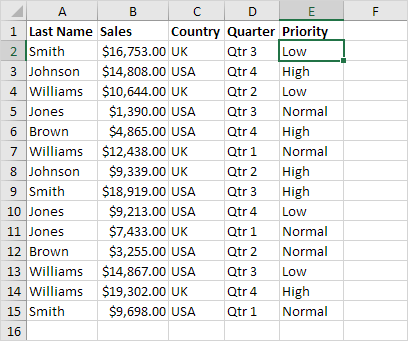Unlock Your Excel Sheet in 5 Simple Steps

5 Simple Steps to Unlock Your Excel Sheet

Have you ever been frustrated by an Excel sheet that seems to be locked or have certain parts you can’t edit? Whether you’re working on financial models, data analysis, or any form of data management, sometimes access to modifying the data is essential. Fortunately, Excel provides several ways to unlock your Excel sheet to regain control. Here, we’ll explore five simple steps to unlock your Excel sheet and make it editable again.
Step 1: Identify the Locked Sheets

Before you can unlock an Excel sheet, you must first determine which parts of the workbook are locked. Here’s how to do it:
- Open your workbook in Microsoft Excel.
- Right-click on the tab of the worksheet you believe is locked.
- Select Protect Sheet or Protect Workbook. If these options are grayed out, it indicates that the sheet or workbook is already protected.
By identifying which sheets are protected, you can then proceed with the unlocking process.
Step 2: Check for Passwords

Locked Excel sheets can sometimes require a password to unlock:
- If a password was used, you’ll need to enter it to remove protection. However, if you’ve forgotten the password, you’ll need to use a different approach.
- If you have administrative rights or are the owner of the workbook, you might not need a password to unlock, but be aware that some passwords can only be removed by the person who created the workbook.
Where possible, try to retrieve or remember the password as this is the simplest way to unlock your sheet.
Step 3: Use Excel’s Built-in Unprotect Feature

If no password is required or you remember the password:
- Go to the sheet you want to unlock.
- Click on Review tab > Unprotect Sheet or Unprotect Workbook.
- If a password is required, enter it here.
- The sheet or workbook will now be unprotected, allowing you to make changes as needed.
🔓 Note: Remember that unprotecting a sheet doesn’t necessarily mean you have full access to all features. Certain elements might still be restricted by other means like cell locking.
Step 4: Removing Protection with VBA

If you don’t have the password or need to unlock multiple sheets at once, VBA (Visual Basic for Applications) can come in handy:
- Press Alt + F11 to open the VBA editor.
- Go to Insert > Module.
- Copy and paste the following VBA code:
Sub UnlockAllSheets()
Dim ws As Worksheet
For Each ws In ThisWorkbook.Worksheets
If ws.ProtectContents Then
ws.Unprotect Password:=""
End If
Next ws
End Sub
- Press F5 to run the macro. This will attempt to unprotect all sheets in the workbook. If a password is required, you’ll need to modify the macro to include the password.
🚨 Note: Be cautious when using VBA as it can potentially modify your workbook in unintended ways. Ensure you have backups before proceeding.
Step 5: Alternative Software Tools

If the above methods fail, there are third-party tools designed specifically for unlocking Excel files:
- Online Tools: There are numerous websites where you can upload your Excel file, and they will attempt to remove the protection.
- Downloadable Software: Programs like Excel Password Recovery or iSunshare Excel Password Recovery can recover or remove passwords.
🔎 Note: Always use reputable tools to avoid risks related to data security or malware infection.
Unlocking an Excel sheet can be a straightforward process or might require some technical know-how, but with these five steps, you have several options at your disposal. Remember that unlocking sheets can expose data to unintended modifications, so always maintain backup copies of your data and be mindful of who has access to make changes.
What should I do if I forgot the password to unlock my Excel sheet?

+
If you’ve forgotten the password, you can either use the VBA method or opt for third-party tools to recover or remove the password. However, be cautious as these methods can have implications for data integrity or security.
Can I lock my Excel sheet again after unlocking it?

+
Yes, you can reapply protection after making changes by going to the Review tab > Protect Sheet or Protect Workbook and optionally setting a new password.
Will unlocking an Excel sheet delete my data?

+
Unlocking the sheet itself does not delete data. However, if you use a third-party tool incorrectly, there’s a risk of data corruption or loss, so always backup your data before attempting any unlocking process.
Are there any legal concerns with unlocking Excel sheets without permission?

+
Yes, if you are not the owner of the Excel file, unlocking or modifying protected content without permission could violate data security policies or legal protections. Always ensure you have the legal right to access and modify the files.